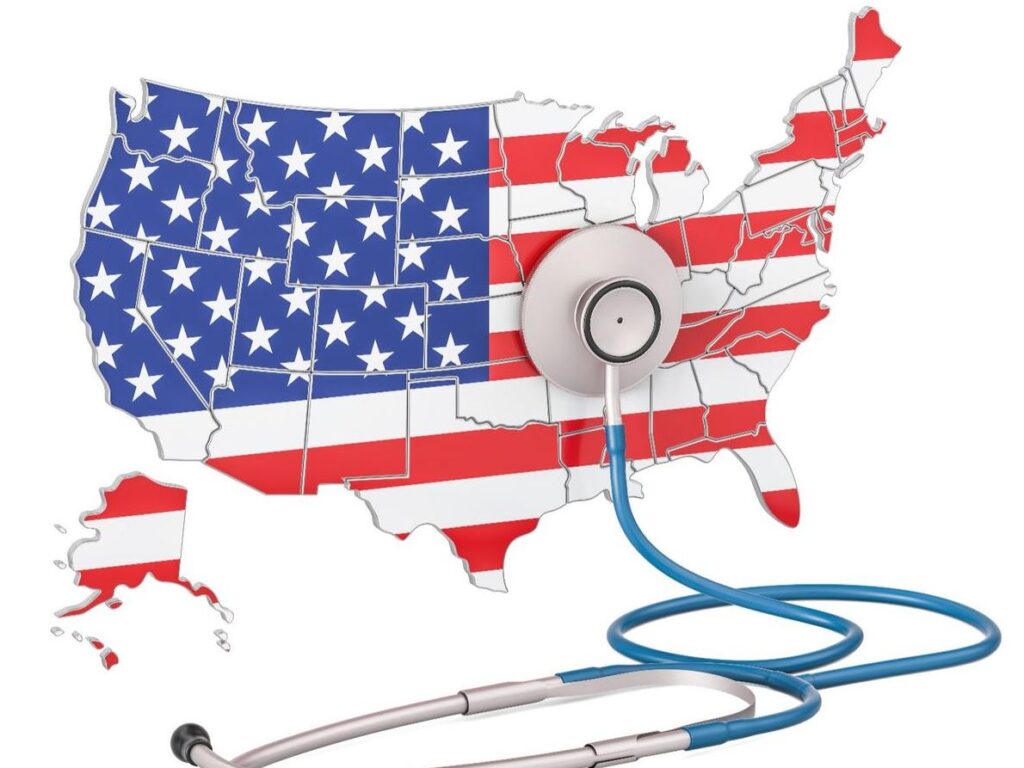Comprehensive Guide to Healthcare in the United States: Insurance, Costs, and Access
Healthcare in the United States can be a complex subject to navigate, especially with its intricate system of insurance, varying costs, and accessibility issues that affect millions of Americans. Understanding how the U.S. healthcare system works, the types of insurance available, and the cost structures is essential for making informed decisions about medical care. This comprehensive guide aims to break down the key elements of U.S. healthcare, providing you with a detailed roadmap to understanding healthcare insurance, medical costs, and access to services.
The U.S. Healthcare System: An Overview
The healthcare system in the United States is often described as a patchwork system because it consists of a combination of public and private health programs. Unlike most developed nations, the U.S. does not have a single-payer national health system. Instead, it relies on a mix of private insurance providers, employer-based coverage, and government-funded programs like Medicare, Medicaid, and the Children’s Health Insurance Program (CHIP).
One of the core features of the U.S. healthcare system is that it is largely insurance-based, meaning that medical care is mostly accessed through private or public insurance rather than government-provided services. This makes understanding the different types of insurance plans crucial to navigating healthcare costs and access.
Types of Healthcare Insurance in the U.S.

Private Health Insurance
Private health insurance is typically purchased through employers, though individuals can also buy insurance on their own through the Health Insurance Marketplace. The most common types of private health insurance plans include:
- Health Maintenance Organization (HMO): HMO plans require you to choose a primary care physician (PCP) and get referrals to see specialists. These plans often have lower premiums but fewer choices of healthcare providers.
- Preferred Provider Organization (PPO): PPO plans offer more flexibility, allowing you to see any doctor without a referral, though you’ll pay more for out-of-network services.
- Exclusive Provider Organization (EPO): EPO plans are similar to PPO plans but do not cover out-of-network care, except in emergencies.
These private plans can vary widely in terms of premiums, deductibles, co-pays, and out-of-pocket costs, making it crucial for consumers to understand the specifics of their chosen plan.
Government-Funded Insurance Programs
Several government-funded programs provide health coverage to specific populations, primarily those who are elderly, low-income, or disabled. These programs are essential in providing access to healthcare for millions of Americans.
- Medicare: Medicare is a federal program that primarily serves individuals over the age of 65, but it also covers younger people with certain disabilities. It is divided into parts: Part A (hospital insurance), Part B (medical insurance), Part C (Medicare Advantage), and Part D (prescription drug coverage).
- Medicaid: Medicaid is a state and federal program that provides healthcare to low-income individuals and families. Eligibility varies by state, but generally, it covers children, pregnant women, elderly individuals, and those with disabilities.
- CHIP: The Children’s Health Insurance Program (CHIP) covers children in families with incomes too high to qualify for Medicaid but too low to afford private insurance. CHIP is administered by states but funded by the federal government.
- Affordable Care Act (ACA) Marketplace: The ACA provides a platform for individuals and families to purchase private insurance with subsidies based on income. These plans must adhere to certain standards, such as providing essential health benefits and protecting against discrimination based on pre-existing conditions.
Understanding the Costs of Healthcare
Healthcare costs in the U.S. can be astronomical, especially for those without insurance or with limited coverage. The key costs involved in healthcare include premiums, deductibles, co-payments, and out-of-pocket expenses.
Premiums
The premium is the amount you pay each month for your health insurance plan. This is a fixed cost, regardless of whether you use medical services. Premiums can vary based on the type of plan, the level of coverage, your age, location, and whether your employer contributes to your plan.
Deductibles and Co-Payments
In addition to premiums, you may also face deductibles, which is the amount you must pay out-of-pocket before your insurance starts covering costs. For example, if your deductible is $1,000, you’ll need to pay the first $1,000 of your medical bills before insurance kicks in.
Co-payments (or co-pays) are the fixed amounts you pay when receiving medical services, like visiting a doctor or filling a prescription. Co-pays can vary depending on the service, and they are often in addition to other out-of-pocket costs like deductibles.
Out-of-Pocket Costs
Out-of-pocket costs refer to the total amount you must pay for medical care that isn’t covered by insurance, including deductibles, co-pays, and coinsurance (a percentage of the cost). These costs can add up quickly, especially for individuals who need ongoing medical care or who require expensive treatments.
Accessing Healthcare in the U.S.
Access to healthcare in the United States is a significant issue for many Americans. Even with health insurance, many people struggle with the high costs of care or face barriers to accessing necessary services.
Availability of Healthcare Providers
The availability of healthcare providers can vary greatly by location. Urban areas tend to have more healthcare providers, including specialists, hospitals, and urgent care centers. In contrast, rural areas may face shortages of medical professionals, leading to longer wait times and less access to care.
Quality of Care
The U.S. healthcare system is home to some of the world’s leading medical institutions and specialists, providing high-quality care in areas like cancer treatment, surgery, and medical research. However, there are discrepancies in the quality of care, with some populations facing significant barriers to receiving the best possible treatment.
Telemedicine
Telemedicine has become a growing part of the U.S. healthcare landscape, especially during the COVID-19 pandemic. Through telemedicine, patients can access healthcare services remotely, including consultations with doctors, mental health professionals, and other specialists. This service has been particularly beneficial for individuals in rural or underserved areas, as well as those who prefer remote healthcare services.
Health Equity and Challenges in the U.S. Healthcare System
Despite advancements in healthcare, health equity remains a significant issue. People from certain backgrounds, including low-income individuals, racial minorities, and those living in rural areas, often face disparities in accessing quality care. These disparities are influenced by several factors, including income inequality, insurance coverage, education, and social determinants of health like housing and nutrition.
Addressing these disparities is a priority for the U.S. healthcare system, with various initiatives aimed at improving access to care for underserved populations. These initiatives include expanding Medicaid, increasing funding for community health centers, and implementing policies that encourage healthcare providers to serve more vulnerable communities.
Conclusion
Navigating the U.S. healthcare system can be challenging due to its complexity and the high costs involved. Understanding the different types of insurance, the cost structure, and access to services is essential for making informed decisions about your health. While the system offers a range of options for coverage, it is vital to stay informed about changes and ensure you are choosing the best insurance plan for your needs. As healthcare costs continue to rise, it is more important than ever to be proactive in understanding your options and making decisions that prioritize both quality care and affordability.




















